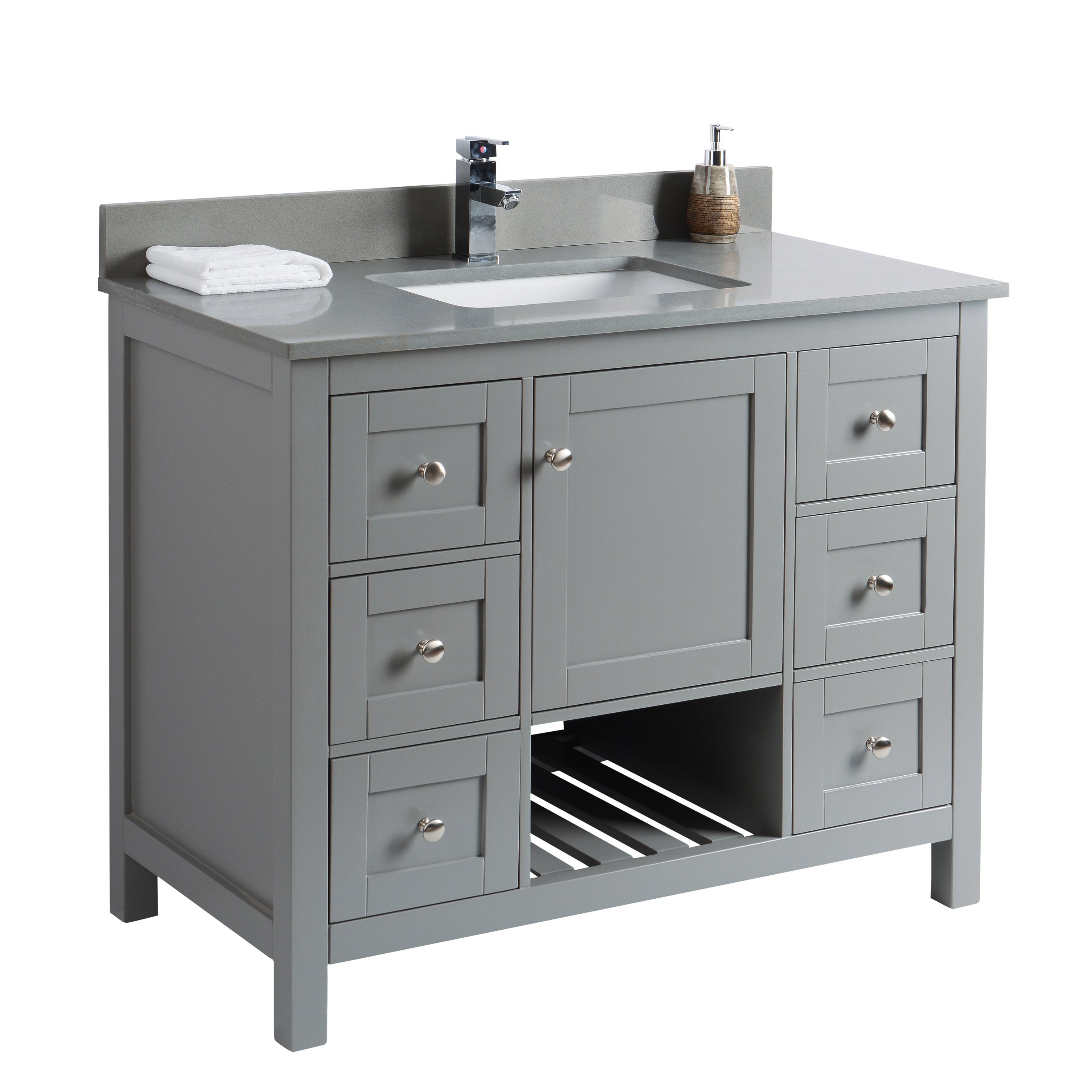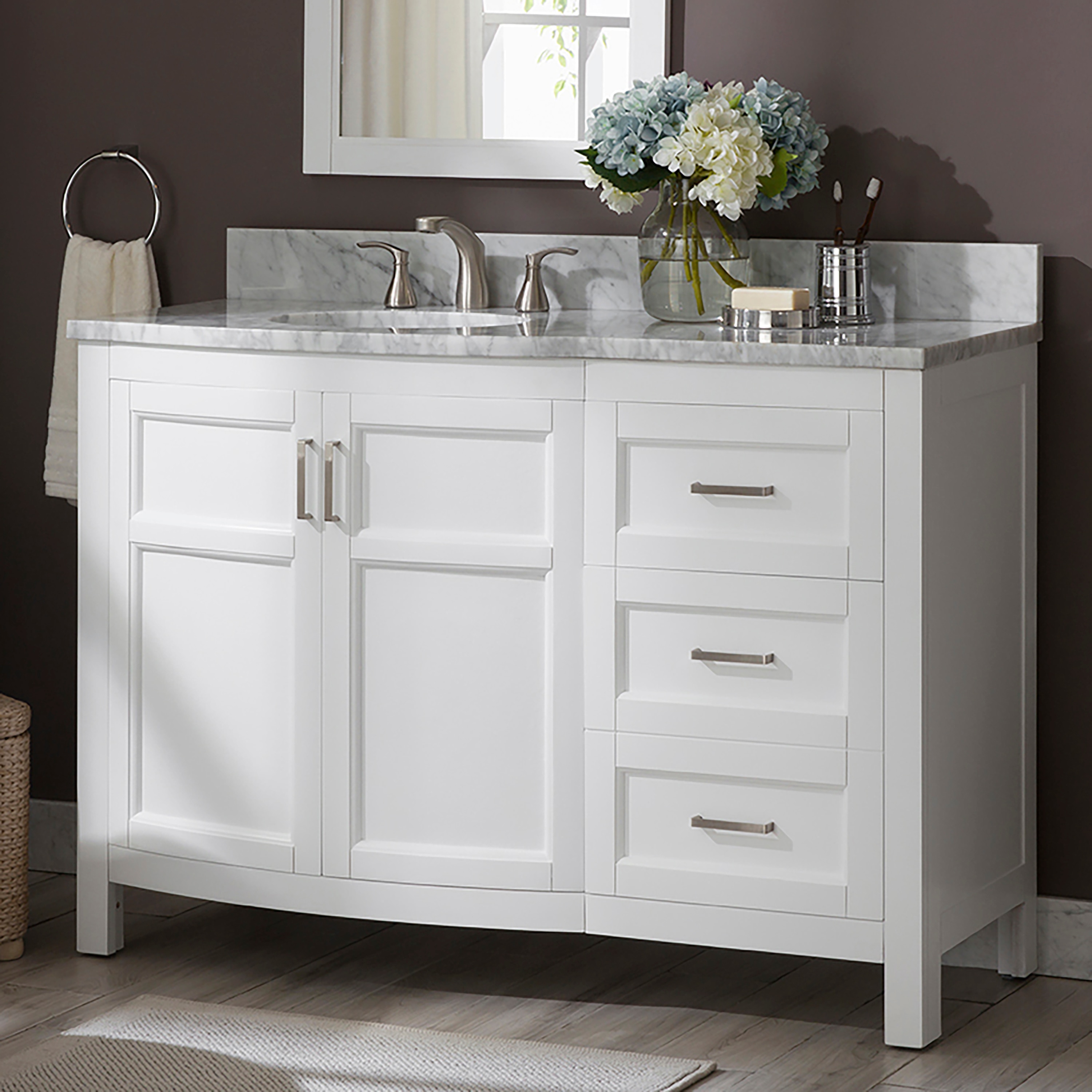Understanding Bathroom Vanity Clearance

Bathroom vanity clearance refers to the amount of open space required around a bathroom vanity to ensure ease of use and movement within the bathroom. It is a crucial aspect of bathroom design, as insufficient clearance can lead to cramped conditions and inconvenience.
Several factors influence the required clearance around a bathroom vanity. Understanding these factors helps in determining the optimal placement and size of the vanity to ensure a functional and comfortable bathroom.
Factors Influencing Bathroom Vanity Clearance, Bathroom vanities clearance 42 inch
The amount of clearance required around a bathroom vanity is determined by various factors, including:
- Door Swing: The direction and arc of the bathroom door swing must be considered to ensure the door does not collide with the vanity or obstruct access to it. Typically, a minimum of 30 inches of clearance is recommended between the door and the vanity.
- Sink Size: The size of the sink determines the amount of space required for comfortable use. Larger sinks require more clearance, while smaller sinks allow for a more compact vanity placement.
- Surrounding Fixtures: The presence of other fixtures in the bathroom, such as a toilet, shower, or bathtub, also influences the required clearance. Sufficient space must be allocated between the vanity and these fixtures to allow for easy movement and prevent overcrowding.
Typical Clearance Requirements for Different Vanity Styles
The specific clearance requirements for a bathroom vanity vary depending on its style and design. Here are some examples of different vanity styles and their typical clearance requirements:
- Standard Vanity: Standard bathroom vanities typically require a minimum of 30 inches of clearance in front of the vanity and 18 inches on either side.
- Corner Vanity: Corner vanities, designed to fit into a corner of the bathroom, often require less clearance in front but may need more space on the sides to allow for access.
- Wall-Mounted Vanity: Wall-mounted vanities, which are suspended from the wall, can be placed closer to other fixtures and require less floor space. However, they may need more clearance above the vanity to allow for plumbing access.
Benefits of a 42-Inch Bathroom Vanity: Bathroom Vanities Clearance 42 Inch

A 42-inch bathroom vanity offers a compelling blend of functionality and aesthetics, making it a popular choice for many homeowners. This size provides ample storage space and counter area while maintaining a balanced visual appeal in various bathroom layouts.
Storage Space and Functionality
A 42-inch vanity provides a substantial amount of storage space compared to smaller vanities. Its wider countertop offers more space for toiletries, while the drawers and cabinets accommodate a variety of bathroom essentials. The increased countertop area allows for a more organized layout, reducing clutter and improving the overall aesthetic of the bathroom.
Exploring Clearance Options for a 42-Inch Vanity

A 42-inch vanity can be a stylish and practical addition to any bathroom, but it’s crucial to ensure you have adequate clearance for comfortable use and easy access. This section will explore various clearance options for a 42-inch vanity, considering wall placement, corner placement, and freestanding configurations. We will also delve into how to maximize space utilization in a small bathroom with a 42-inch vanity and discuss the impact of different sink styles and countertop materials on the overall clearance requirements.
Wall Placement Clearance
Wall-mounted vanities are a popular choice for smaller bathrooms because they maximize floor space. When considering wall placement, it’s essential to allow enough clearance for comfortable use.
Here are some key considerations:
- Minimum Clearance: Aim for at least 30 inches of clearance in front of the vanity to allow for easy movement and access to the sink.
- Door Swing Clearance: Ensure there is adequate space for doors to swing open without hitting the vanity or other fixtures.
- Towel Bar Clearance: If you plan to install a towel bar near the vanity, ensure there’s sufficient space for comfortable use without obstruction.
Corner Placement Clearance
Corner vanities can be a space-saving solution for small bathrooms, utilizing otherwise wasted space.
When considering corner placement, it’s essential to:
- Maximize Corner Space: Choose a vanity that fits snugly into the corner without sacrificing accessibility.
- Allow for Door Swing: Ensure there’s enough space for doors to open and close without colliding with the vanity.
- Consider Sink Style: Opt for a corner sink design that provides ample counter space and a comfortable reach for the faucet.
Freestanding Vanity Clearance
Freestanding vanities offer a more traditional look and can be placed anywhere in the bathroom.
When considering freestanding vanities, keep in mind:
- Accessibility: Ensure there is enough clearance around the vanity for comfortable movement and access to the sink.
- Plumbing Considerations: Freestanding vanities may require additional plumbing work, so it’s essential to consult with a professional plumber to ensure proper installation.
- Floor Space: Consider the overall footprint of the vanity and ensure it fits comfortably within the available floor space.
Maximizing Space Utilization with a 42-Inch Vanity
A 42-inch vanity can be a practical choice for smaller bathrooms, but maximizing space utilization is crucial.
Here are some tips:
- Vertical Storage: Utilize vertical space with tall cabinets, shelves, and mirrors to store toiletries and other bathroom essentials.
- Under-Sink Storage: Choose a vanity with drawers or cabinets below the sink to maximize storage space.
- Wall-Mounted Fixtures: Consider wall-mounted towel bars, toilet paper holders, and other fixtures to free up floor space.
Impact of Sink Styles and Countertop Materials on Clearance
The choice of sink style and countertop material can significantly impact the overall clearance requirements for a 42-inch vanity.
- Sink Style: Vessel sinks typically require more counter space and can affect clearance due to their height. Undermount sinks offer a sleek look and maximize counter space, while drop-in sinks are a more budget-friendly option.
- Countertop Material: Countertop materials like granite or quartz can add to the overall weight of the vanity, which may require additional structural support.
